Easter around the world
As Easter celebrations are curtailed again due to the Covid-19 pandemic, this issue offers a collection of reflections looking at the celebration of Easter around the globe.

Photo: iStock
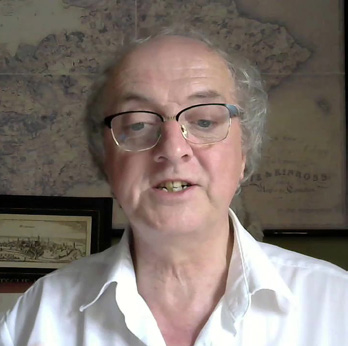
The Rev Jimmy Brown, Church of Scotland minister in Bochum, Germany. The congregation is an associate member of the Presbytery of International Charges of the Church of Scotland.
Many of Germany’s most widespread Easter traditions are clearly of pre-Christian origin: the Easter hare (not a bunny, but a hare) lays Easter eggs in an Easter nest. This all smacks more of the ancient fertility goddess Ostera (hence German Ostern, English Easter) than of any deeper-seated, specifically Christian message, in spite of strained attempts to claim the hare was a Byzantine symbol for Christ.
But there are plenty of ancient Christian customs in Germany too. The Lutheran Reformation, less iconoclastic than the Calvinist, retained many liturgical Easter usages from pre-Reformation times, so they survive both in the predominantly Roman Catholic south and in the majority Protestant north.
You will find an Easter or Paschal candle close to the altar in all Roman Catholic and many Protestant churches, for example, lit throughout the year whenever any act of worship is celebrated (German Protestants don’t shun candles in church as many Scottish Presbyterians might!). It is decorated with a cross, the year’s date, and five spikes or thorns symbolising the wounds of Christ.
These Easter candles are usually inaugurated during a midnight service on Holy Saturday, which starts in total darkness until the point when – at midnight – the new candle is carried forward into the sanctuary lit. In our local context, it is donated by the neighbouring Roman Catholics, an ecumenical sign of the unifying power of Christ as Lux Mundi (the Light of the World). Baptisms are often celebrated during these midnight services, a tradition dating back to the Early Church.
The Easter chorale Christ ist erstanden (Christ is Risen), dating from the 12th century, is probably the oldest liturgical song in German. Martin Luther included it in his 1529 hymnbook, and a widespread practice is still, especially in Protestant areas, for church brass ensembles to play it in celebration of the Resurrection at sunrise services in local graveyards on Easter morning:
Christ is arisen, from His torment broken free; wherefore we all should shout for joy, Christ shall be our solace now, Kyrie eleison. Had He not been raised this day, the world would surely pass away; now He has been raised to life, we praise the Father of Jesus Christ, Kyrie eleison. Hallelujah! Wherefore we
all should shout for joy, Christ shall be our solace now, Kyrie eleison.

Szabina Sztojka, Student Associate Minister, St Columba’s Church, Budapest
Growing up, Easter was always my favourite holiday; most of my favourite memories are connected to it. In Hungary, Christian holidays are two days long, and so it is with Easter, when we celebrate Easter Sunday and Easter Monday. Different families celebrate it differently, but the folk traditions are still very distinctive.
As for Easter Sunday, families celebrate together, having a delicious Easter breakfast before going to church and celebrating the resurrection of our Lord, Jesus Christ. In my local Reformed church in Kiskunhalas, we gather at dawn at our local lake and watch the sunrise as we sing hymns, celebrate and read the story of resurrection from Scripture. Then we gather for worship in our church at 10am and we celebrate communion, which is usually the first communion for adults who were confirmed on Palm Sunday. In my family, we have a big Easter lunch with close family members. In the afternoon, we paint eggs and bake different cakes as a preparation for Easter Monday.
While we have church services on Easter Monday, too, this day is heavy with the folk traditions that surround Easter. Early in the morning, men of the families from young to old start visiting households in their villages, towns and beyond. The goal of this is to ‘water’ or ‘sprinkle’ girls and women so they don’t ‘wilt’. This is based on a former pagan fertility tradition and it was also a form of courtship. First boys and men recite a little poem and at the end they ask the question ‘Szabad-e locsolni?’ meaning ‘Is it allowed to sprinkle?’. If the answer is yes, which it usually is, they sprinkle them with perfume.
In some villages, where they follow older traditions, they use a huge bucket of cold water. As a response, girls give them either eggs they have painted or chocolate ones, offer them food or a little palinka. Sometimes boys get some pocket money, too.
“And that is Easter, the power of resurrection that brings people together, as God’s glory is reflected in different cultures, helping us remember the joy that comes from God.
Why do I love this tradition so much? It brings communities together. I remember some people we saw only on Easter Monday. There were Easters where we had around 100 people visiting our home. Some arrived with musicians and stayed a while to talk before visiting the next family. They told stories, and we laughed, danced and celebrated. We had people sitting around our table from both the majority and the Roma communities and it was normal and beautiful. And that is Easter, the power of resurrection that brings people together, as God’s glory is reflected in different cultures, helping us remember the joy that comes from God.

The Rev Jan Steyn, minister, the Scots Kirk Paris.
Pâques en France – Easter in France – is a wonderful time.
Imagine – All the French church bells leaving for Rome! This must be the most peculiar story about Easter in France.
But let’s start with a slightly bigger picture: freedom of religion in France is guaranteed by the constitutional rights set forth in the 1789 Declaration of the Rights of Man and of the Citizen. In 1905, France became a secular state and, since then, the French government has followed the principle of laïcité, in which the State does not recognise any official religion. Yet, in France all Christian festive days are official holidays – including Good Friday and Easter Monday (don’t mess with the French’s holidays!).
The Catholic Church in France is the largest of Christian denominations, although increasingly large numbers of French regard themselves as secular.
Easter officially starts with Ash Wednesday following ‘Mardi Gras’ or ‘fatty Tuesday’. This used to be a festive day of home baking – emptying kitchen of eggs and flour with crêpes on the first Friday of Lent. The Mardi Gras in Nice continues for ten days into Lent.
All church bells are silent as from Maundy Thursday. The story goes that all the bells ‘depart’ for Rome… previously they were brought back on Easter Sunday by the Pope. Traditionally these bells returned in the form of chocolate bells (trust the French when it comes to chocolate!) but the chocolate bells are more recently replaced by eggs or the Easter bunny – nobody really knows how the bunny had come to replace the ‘bells coming from Rome’.
Church bells are important in France. In Strasbourg Cathedral, the Easter bells are tuned half a note apart. When they toll during Lent, the sound ‘rubs against each other’ in a rather uncomfortable way, resembling the Passion on our Lord.
In the Scots Kirk Paris, we used to have a ‘Tenebrae Service’ on the Thursday. During this service where the readings are Jesus’ words on the cross, seven candles will be put out consecutively. Everybody leaves the church in darkness and silence. But that was BC – before Covid-19. This year we won’t have a service on Thursday due to the “couvre feu”. Although, festive celebration on Easter!

Photo: iStock
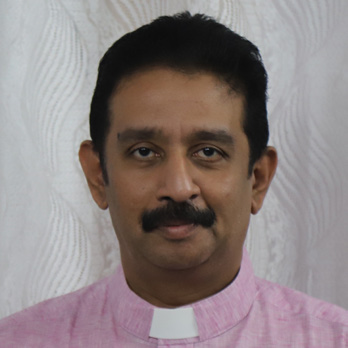
Vinod Victor, Presbyter of the Church of South India South Kerala Diocese and Chairperson of Asia CMS (Asia Collaborative Mission Services).
The scenic Indian state of Kerala, the land of religious harmony, celebrates all festivals of the people with the same fervour and Easter is no exception, if not special.
It is a festival of hope: The Church of South India South Kerala Diocese is a people who once were a ‘no-people’ in a caste ridden context but who with the coming of the gospel became ‘the liberated people of God’. Easter therefore means a lot to the people as the celebration of life over death and light over darkness. This marvel is usually announced with great fervour by people traversing the streets after the Easter Vigil shouting out “He is Not Here, He is Risen”. “Hallelujah Jesus is Risen.” People celebrate from their heart passing over a great message to the next generation – We Are Who We Are Because of the Risen Christ.
It is a festival of joy marked by food. Forty days of Lent is seriously followed by many people and it is a tradition of the land that people do not eat meat and fish during these days. Easter therefore is a long awaited occasion of breaking the Lent fast. It is appam and chicken, biriyani and mutton, fish and pork and whatnot. The Easter delicacies of Kerala are yummy indeed. Churches and households are illuminated and the Passion Week rush in the churches reaches its peak. The pandemic did cast a shadow on this meeting together of people but it could not steal the joy and hope therein.
“The Church of South India South Kerala Diocese is a people who once were a ‘no-people’ in a caste ridden context but who with the coming of the gospel became ‘the liberated people of God’.
It is a festival of giving. The Easter service is marked all over the Diocese by Self Denial Offerings. Forty Days of Lent also meant people kept apart the cost of what they abstained from for a cause. On Easter Day this is offered at church and the same is used for a noble cause of justice and love every year.
It is a festival of singing. People of Kerala are a singing people. Choral music is at its best during Easter and Passion recitals. It has been the tradition that hundred voice choirs, mass choirs and even thousand voice choirs perform recitals on Easter day.
Visiting choirs find this as the best season for a visit. The biggest stealing of the pandemic the people say is the joy of singing together and celebrating fellowship.
It is a festival of new beginning – Octave of baptisms and weddings. It has been a tradition that anything good was not initiated during Lent. Usually baptisms and weddings are not held. Once Easter rings in then the week is full of weddings, house warmings and celebrations. Easter Sunday is the Sunday of baptisms and confirmations in several churches.

Dario Barolin, pastor of the Waldensian Church in Uruguay and executive secretary of AIPRAL, the Alliance of Presbyterian and Reformed Churches in Latin America.
Easter continues to instil hope even when darkness keeps trying to find its way. Light ultimately triumphs.
More than a century ago, the Uruguayan state separated ‘the Church’ from the state. Since then, the traditional Christian holidays have received secular names. The week from Palm Sunday to Easter is known as ‘Tourism Week’.
But it is not just an issue of name. In fact, it reflects very well how most of the people understand and live this week. There are a lot of festivals (the beer festival is the most popular), cultural and sport activities. Also Uruguay is all surrounded by rivers and ocean and the weather most of the time is still really good for outdoor activities.
In such a context, only a few more people are expected to come to church services, especially on Friday rather than Sunday but not so much as at Christmas. Christmas has a lot of publicity. Certainly, all the marketing mostly betrays its deep meaning but, even so, it helps to have a feeling that Christmas is still there. The secular name ‘Family Feast’ couldn’t supplant ‘Christmas’. The opposite happens with Easter. Chocolates and bunnies are not of much help.
In conversation with people around, interestingly enough, I found that those with some memory of Holy Week associated it only with the sacrificial aspect of Jesus’s death. The images remembered are related to a lugubrious atmosphere and sense of guilt (after all, Christ died for us!). The meaning of the cross seems to be detached from the historical and theological context of Jesus’s ministry.
In fact, Jesus did not die. Jesus was murdered because of what he said and did in favour of the outcast and the excluded. The salvation that Jesus brings to our life is not in the event of the cross, there we find the immense and unconditional love of God for us. Jesus’ salvation is revealed in his words and deeds and confirmed in his resurrection. Why is Holy Week not engaging our societies? Is it just an issue of secularism? Is the empty cross still a powerful symbol that communicates the Christian message? How is it read in a context where theological illiteracy is mixed with a culture of guilt? Are not breads and fishes better symbols to communicate the gospel of Jesus Christ?
I believe that those questions may help us to engage with people around. They may help to communicate the profound sense of hope and compromise that we have when on Easter, we listen again: “Do not be alarmed; you are looking for Jesus of Nazareth, who was crucified. He has been raised; he is not here. Look, there is the place they laid him. But go, tell his disciples and Peter that he is going ahead of you to Galilee; there you will see him, just as he told you.” (Mark 16:6-7, NRSV)
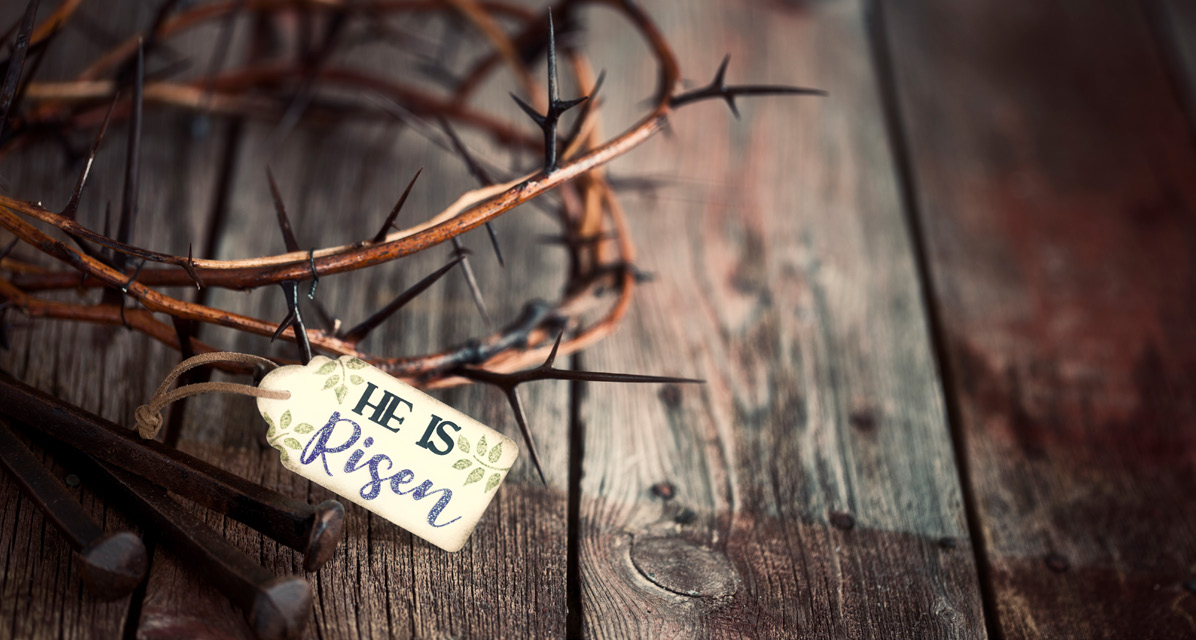
Photo: iStock
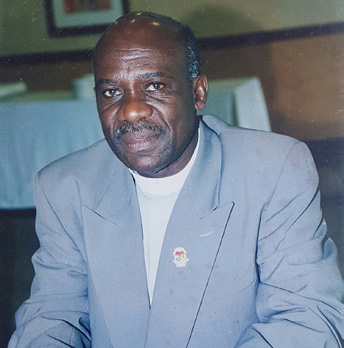
The Rev Howard Matiya Nkhoma (Minister Emeritus), Church of Central Africa Presbyterian, Synod of Livingstonia, Malawi.
Easter is a season when the Christian Churches remember the sufferings of our Lord Jesus Christ and the subsequent conquest of death by His resurrection. It is the centre of Christian belief. Easter is the most celebrated annual event in the Presbyterian church tradition in Malawi.
Easter is grounded on worship and is launched with prayers on Palm Sunday reminding the Triumphal Entry of our Lord Jesus in Jerusalem when he rode on a colt. Sermons emphasise the significance of Christ publicly displaying His heavenly Kingdom which is centred on the rule of human hearts and not, as wrongly perceived by many people, that he would establish an earthly kingdom.
Sunday school going youths participate in a drama showing Jesus riding a colt as others cheer Him with the palm branches. Dramas on the trial and crucifixion of Jesus are often conducted by members of the Youth Guild.
The period between Palm Sunday and Easter Sunday is dedicated as a Holy Week with several members meeting in smaller sections of the congregations. Bible studies are conducted relating to lessons in which Jesus was engaged. These include Jesus answering questions on the resurrection, paying tax, marriage, anointing at Bethany, arrest in Gethsemane, Trial and Crucifixion. Most congregations hold short Kirk Sessions to receive names of those who want to join the church or seek restoration.
The Presbyterian churches in Malawi pay a lot of attention to discipline matters and recommend suspension of members who may have ethical or other cases.
However, suspension of church members during Easter meetings is not administered in the Synod of Livingstonia. It is not a time to see souls being lost. Emphasis is placed on admitting people into the fold.
Churches that have several prayer points hold Easter prayers at the central church.
Several times new members may be admitted into Church membership on Easter Saturday through baptism or confirmation while others also join the guilds.
Early on Easter Sunday, members of the Women’s Guild gather from around 5am or earlier; singing songs with joy announcing the resurrection of Jesus. They may visit several homes. In local language, the event is referred to as “KAMUNENERENI” meaning “GO AND REPORT THAT CHRIST IS RISEN”. This is centred on the Scriptures recorded in the Gospels (Mark16:7, Matthew 28:7, Luke 24:8, John 20:17).
The texts mentioned above command the women who visited the tomb where Jesus was buried to spread the news that the “Lord is risen”. By around 8am churches are packed. A majority of members partake in the Holy Communion. Church choirs including those from the Guilds form an integral part of the Church service.
The Easter Sunday Service announces the victory of Christ over death and a call to follow Him.
With the advent of Covid-19, Easter activities are being adjusted. Seating capacity of church buildings is reduced. Those congregations that can manage, erect tents outside to create extra space. Services are made much shorter. There is not as much celebration as worshippers avoid contacting each other. However, the value of Easter has remained the same.
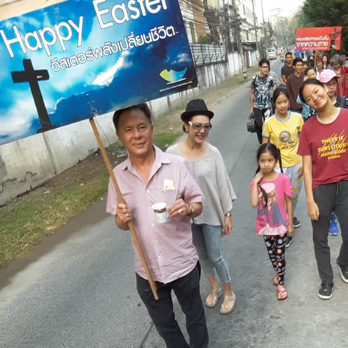
Prawate Khid-arn, Acting Director, Social Development and Service Unit of the Church of Christ in Thailand.
Early morning on Easter Day, Church members of the Huey Kaew Church (Crystal Spring Church) in Chiang Mai, Thailand, gather together at the cemetery of the church (Heaven Garden) decorated with a cave with an open door and an empty inside symbolising the resurrection of Jesus Christ.
The celebration normally begins with candle-lit singing, listening to the word of God and the meaning of the resurrection of Jesus Christ, prayer for a new life, and seeking guidance to confidently face any future obstacles and difficulties.
After worship, church members, especially children and youth, find a variety of colourful boiled eggs in the area of the activity. It symbolises the pursuit of a more beautiful and brighter future. Each family brings food from their home to share, and after thanksgiving, everyone has breakfast together with plenty of fun and joy.
On the way back, the church pastor leads a group of young people to distribute Easter eggs and Christian flyers to people as they pass by.
“After worship, church members, especially children and youth, find a variety of colourful boiled eggs in the area of the activity.
This year, we continue to give thanks to God. Despite the second Covid-19 outbreak. In Thailand since January 2021, the pandemic has been controlled in a short time. The government has allowed more public activities. The Huey Kaew Church, supported by the Ban Sabai Foundation (the Christian-based Foundation) together with local churches and government units will distribute a “Pun Rak” (Sharing love) set consisting of clothing, rice, dry food, eggs, etc, priced at about 500 baht (18 US$) per set to the elderly citizens, the disabled, people living with HIV/AIDS and their families, and other people that need help.
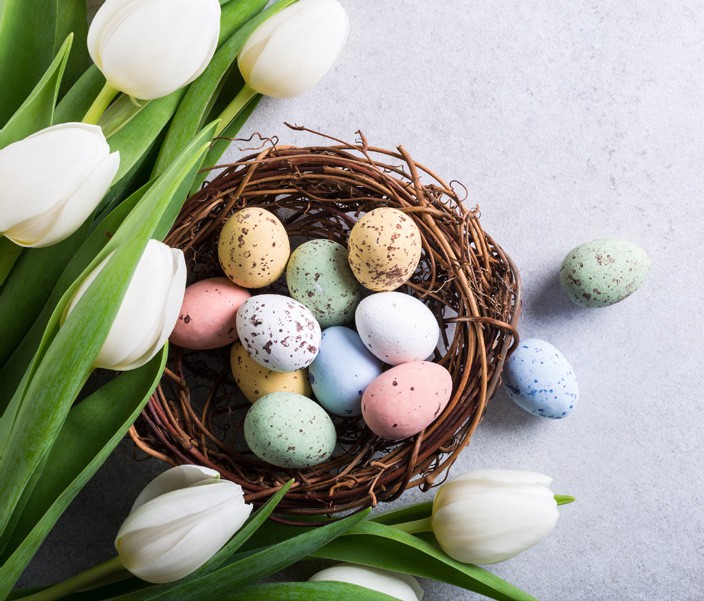
Photo: iStock
“Easter is the most celebrated annual event in the Presbyterian church tradition in Malawi.